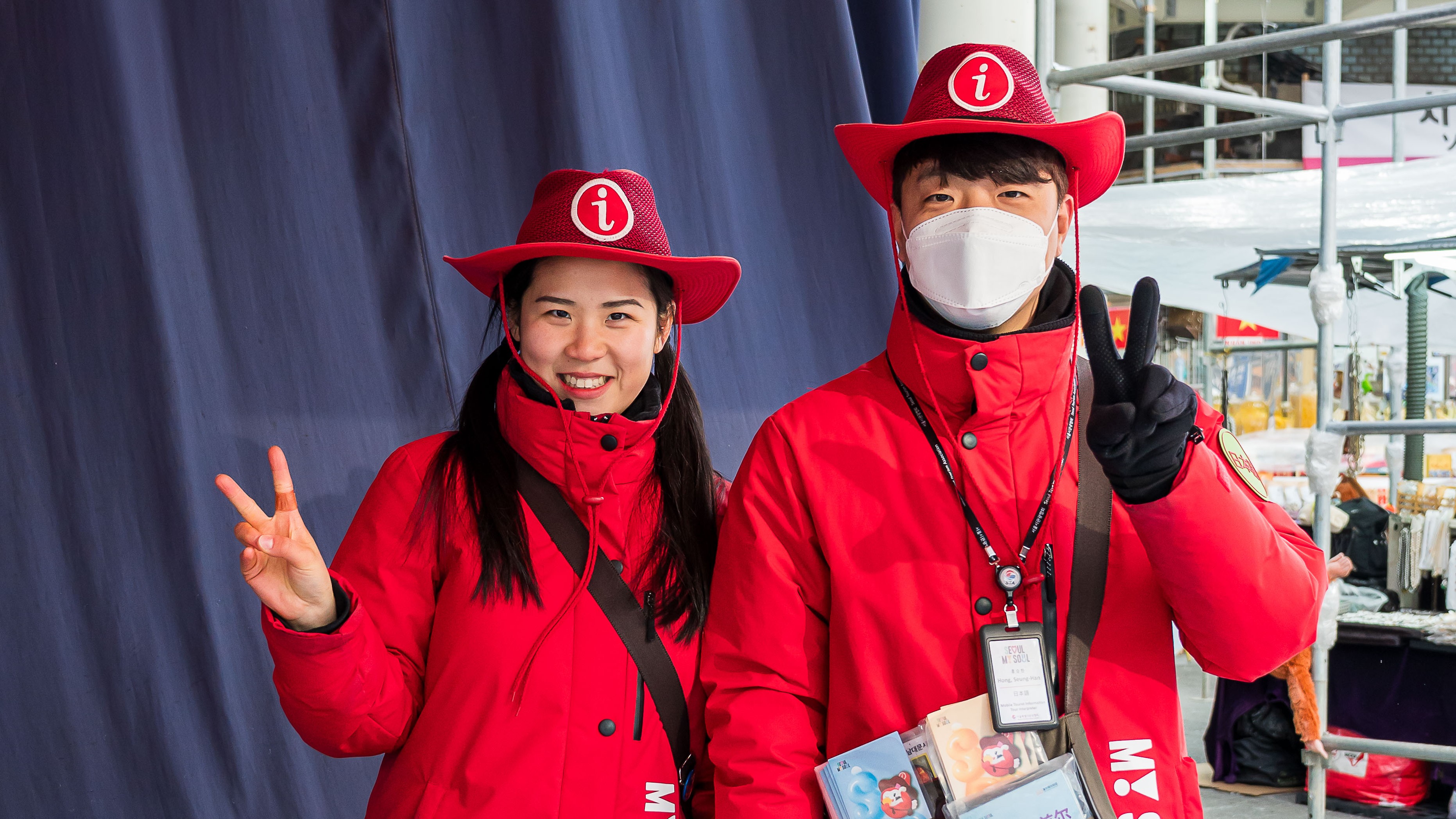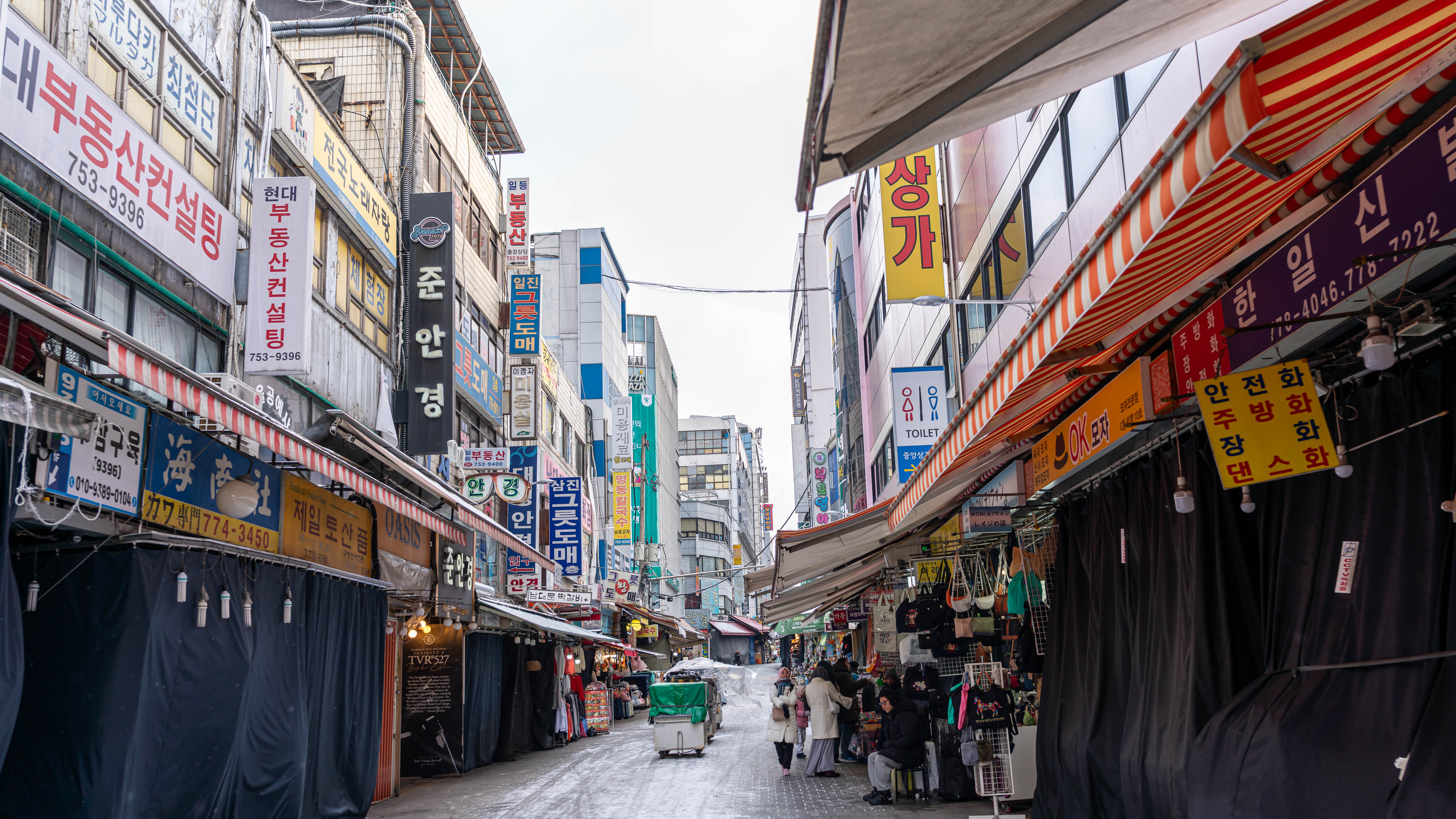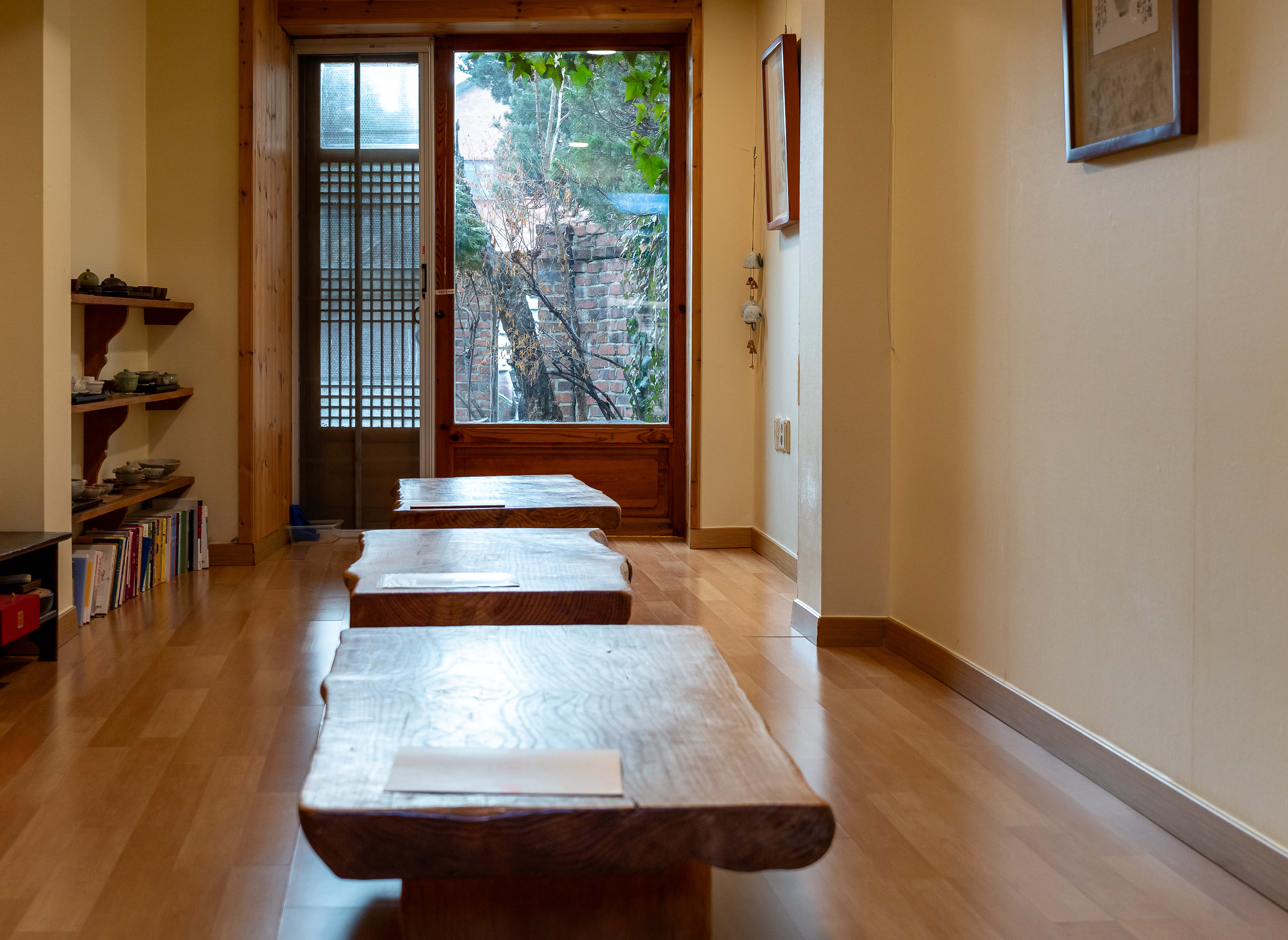Seoul in the winter is a city of stark, beautiful contrasts. The air is sharp and crystalline, full of the essence of roasting chestnuts and the faint, clean smell of frost. Its massive skyscrapers of glass and steel reflect a pale, weak sun, and its ancient curved tiled roofs glow under tiny white caps. To understand this paradox, this seemingly effortless intertwining of the hyper-modern and the profoundly traditional, one needs to walk. And there cannot be a better start for this urban odyssey than in the vast, multi-layered ecosystem of Seoul Station into the busy, thumping heart of Myeongdong, and finally on to the tranquil, timeless heights of Bukchon.
The Red Volunteer Guides in a Thriving City: Help and information at hand for the visitor
Issuing from the echoing, cavernous corridors of Seoul Station, where KTX bullet trains unobtrusively slip in and out like ghostly silver, the initial shock is the cold. It's not a temperature so much as a presence. It nips at the ears and bites at fingertips, requiring a rapid readjustment of scarves and gloves. The cityscape looms in the distance, a sawtooth jungle of dreams, but the target for the moment is the gravitational centre of Myeongdong, just a twenty-minute walk. When the crowds swell and the famous neon lights of the shopping district start to turn on against the early evening gloaming, a glimmer of order happens: the MY SEOUL Volunteers.
They are unmissable in their distinctive, vibrant red uniforms, official lanyards holding IDs that swing as they turn, their faces warmed by helpful smiles that seem to defy the chill. They are the human antidote to the overwhelming sensory input of Myeongdong. Clutching rolls of detailed maps and with smartphones loaded with every app that might be necessary, they stand like friendly sentinels, their eyes trained to scan the crowd for tell-tale signs of confusion—a furrowed brow over a phone, a map held upside down, a slow, spinning circle of indecision.
"Can I help you find something? " one of them asks, her voice cheerful and clear. She stands beside a nascent tourist with difficulty matching the blue dot on his screen with the three-dimensional world in front of him. She kindly says that although Google Maps is a global giant, in Korea it more commonly falters. "For precise navigation, we use NAVER Map or KakaoMap," she says, her hand stretching out to point to the app store icon on his phone. "And for the subway, the 'Seoul Subway' app is ideal.". It works offline, too." She provides a physical map, an actual relic in the digital age, and makes sure he knows where he's headed before she melts away into the red sea of her team. This first encounter is more than merely directions; it is a welcome, a reassurance that in this vast, bustling city, you are not alone.

The Carnival of Commerce and Cold
Fortified by that human connection, the plunge into the Myeongdong market streets is a full-body experience. The cold is now a backdrop, forgotten in the face of the thermal heat emanating from countless food stalls and the press of bodies. It’s a carnival of commerce, a symphony of sizzle and shout.
The stalls are a kaleidoscope of goods: cartoon-character socks piled high like rainbows, trendy bags and leather goods dangling, and an endless array of Korean beauty products promising dewy, porcelain skin even in the driest winter. Yet, in the early morning, a different, more tranquil Myeongdong emerges. Many of the steel shutters are still down, the vibrant chaos replaced by a quiet hum of preparation. Delivery boys on scooters swerve with impossible elegance along the thin streets. The open stalls are setting up, their products not yet under the full beam of neon but in the soft, grey light of morning.
Here, haggling over a trendy t-shirt or an offbeat bag seems more like a conversation and less like a fight. The first concern is common to all: the language gap. Will the ajumma (아줌마) who is managing the shop stall be able to comprehend "How much?" never mind a counter-proposal? But business is a very old, global language. A smile, a nodding finger, and an inquiring glance are all the words required. Often, the vendor, with a practiced nod, will simply tap a price into the calculator on their mobile phone and turn the screen towards you. The numbers do the talking. A feigned gasp, a shake of the head, and a counter-offer tapped with your own finger begins a silent, good-natured dance. It’s a game of expression and gesture, culminating in a mutual smile and a nod when a price is agreed upon.
The payment, whether in the colourful, won-filled notes of local cash—still the preferred, swiftest method in these fast-paced stalls—or a quick tap of a digital payment system, seals the deal. It’s a small victory, a token of connection purchased not just with currency, but with a moment of shared understanding.

An Ascent to Silence: From Myeongdong to Bukchon
Sated by shopping and street food—a hotteok (호떡) (sweet, syrupy pancake - barbarian's rice cake) giving way to warmth and sugar—the journey continues. The modern underground world of the Seoul Metro offers a warm refuge. The crowd is different at the Myeongdong Station; it's not about commerce but more about transit—a river of people flowing efficiently toward their platforms.
A short, smooth ride on Line 4 to Chungmuro, then a transfer to Line 3, and you arrive at Anguk Station. The change above ground is immediate and profound. The cacophony of Myeongdong is replaced by a hushed reverence. This is the gateway to Bukchon Hanok Village, a neighbourhood perched on a hill between two historic palaces. The air feels cleaner, colder. The winding roads, hilly and very slick in places with a thin sheen of frost, climb steeply and run between hundreds of traditional Korean houses, or hanoks.
Dark wooden beams and elegant, winged grey-tiled roofs curve skywards; a stark architectural contrast to the brutalist cubes of the city below. Smoke drifts lazily from a handful of chimneys, and the delicate, woody scent of smouldering wood-briquettes transported from another time blends with the chill. Amidst this maze is an oasis: Cha-Teul (차뜰). Discovering it is half the journey, a gift for braving the sloping alleys. Walking through its wooden entrance is to walk through a time portal. The sounds of the city vanish, absorbed by the courtyard walls. But before entering the main building, a crucial ritual must be observed. At the doorstep, a neat row of shoes—boots, sneakers, loafers—tells the story. Following suit, you untie your own cold-stiffened laces and leave your footwear on the designated shelves.
This act is more than practical; it is symbolic. You are leaving behind the dust and rush of the contemporary city, ready to step into a realm of peace and tradition. Within, the warmth is an enveloping caress. The low tables, inches from the ground, necessitate a physical adjustment. Guests slump down, sitting cross-legged or, for the bold, kneeling on their knees in the classic seize position. The low perspective changes the world. You notice the fine grain of the polished wooden floor, the intricate patterns of the window lattices casting long shadows in the afternoon light. A pot of traditional persimmon leaf tea is ordered, its deep, earthy, slightly sweet flavour warming from the inside out. Sitting there, in silence, feeling the heat of the teacup in your hands and the gentle strain in your legs, is a moment of pure, unadulterated presence. The only sounds are the soft clink of porcelain and the distant, muffled laughter of other patrons. It is a meditation, a necessary pause in the heart of a frenetic city.

Conclusion: The Walkable Tapestry of Seoul
A snap tour of Seoul’s main areas reveals a city that is a masterful blend of tradition and modernity, not as separate entities, but as intertwined threads in the same vibrant tapestry. The journey from the logistical hub of Seoul Station, through the commercial carnival of Myeongdong, and up to the serene, historical perch of Bukchon Hanok Village, is a microcosm of the Seoul experience.
It is a city that you need to walk. The metro is a miracle of efficiency, and there are taxis everywhere, but they are links, not the experience. It is on foot that you sense the city's beat—the shift from the flat, modern grid to the tough, hilly streets of its older neighbourhoods. It is up these slopes, with your breath steaming in front of you in the cold air, that you really deserve the vistas and the peace. You find the secret tea houses, the quiet lanes between hanoks, and the authentic hospitality behind the red uniforms of the volunteers. Seoul, particularly in the clarifying cold of winter, is a city of layers, geographical and cultural. To take one's stroll is to strip these layers away-one step at a time, finding that beneath the shining facade of K-pop and marvels of high technology there lies an ancient, stable, and deeply lovely heart.
How about this article?
- Like0
- Support0
- Amazing0
- Sad0
- Curious0
- Insightful0


